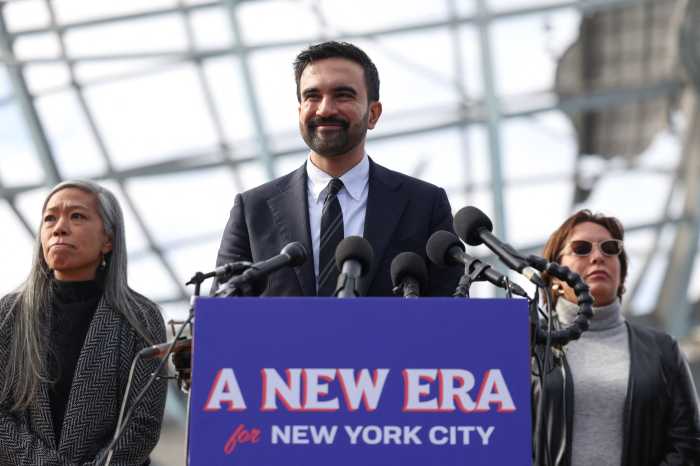The right to vote is the foundation of our democracy — and that begins with ensuring every voter can understand the issues they’re voting on. That’s why New York passed critical voting rights legislation last year that requires ballot measures to be written in plain language — specifically, at or below an eighth grade reading level.
This year, New York has a critical opportunity to demonstrate, for the first time, that plain language measures work. Twenty-one states have laws on the books on ballot measure readability — and in 2023, New York became the latest state to pass legislation setting clear standards for ballot measure readability. Specifically, all statewide ballot measures are now required to score at an Automated Readability Index (ARI) of 8.0 or below — the equivalent of an 8th grade reading level.
Unfortunately, the State Board of Elections’ first attempt to follow this plain language requirement last week missed the mark, using unnecessarily complicated legalese to describe a measure that would enshrine New Yorkers’ rights and reproductive freedoms, including abortion, in New York’s State Constitution — Proposal 1.
In November, Proposal 1 will be on the ballot when New Yorkers head to the polls. Voters will vote on an amendment to the State Constitution that would protect all New Yorkers against government discrimination. This means that no matter your sex, age, ethnicity, or disability or pregnancy status, your rights would be protected — including your right to abortion. This is in addition to existing language in the State Constitution that provides protection on the basis of “race, color, creed, or religion.”
Unfortunately, when the Board of Elections posted its proposed ballot language for Proposal 1, the language was far from readable. Despite a required Automated Readability Index of 8 or lower, the Board of Elections itself scored its own ballot readability as a 14 — indicating the language is far above an eighth grade reading level, and more at a college-grad level.
Despite the legislature’s clear and explicit effort to add abortion protections to the State Constitution in the wake of Roe v Wade being overturned and abortion bans being passed in states around the country, the Board’s ballot language does not even include the word “abortion” in its description. Both this omission and the use of overly complex language run counter to the purpose of the law. The Board’s proposed ballot language must be simplified to fulfill the State’s plain language requirements, so all voters can understand this ballot measure.
New York State made significant strides in promoting voting accessibility when the Plain Language law was enacted. Ballot measures allow voters to directly weigh in on policies that shape our state. These statewide ballot measures can determine State spending and actions around climate protections, voting rights, abortion and more. Yet for too long, New Yorkers have entered the ballot box and encountered convoluted, unintelligible legalese on their ballot. In fact, an evaluation of the readability of two ballot proposals presented to voters in November 2021 determined that voters needed a college-level reading comprehension to understand the proposals. At the same time, 3.9 million adults in New York lack English language proficiency, basic literacy or a high school diploma — almost 20 percent of our state’s population. That means many voters are being kept at a disadvantage when they enter the voting booth; the new law helps solve that problem.
While in the past, it was not uncommon for voters to cast their ballots for elected officials and skip the ballot amendments, this is New York’s first chance to demonstrate how the Plain Language law can expand voter participation and engagement. As states across the country face an ongoing wave of voter suppression and attacks on voters’ fundamental rights, New York should and must stand up as a national example — a state where voting rights are championed, protected and expanded.
Thankfully, New Yorkers have an opportunity to weigh in and express their views on the ballot language. All New Yorkers can submit public comments on the proposal for fifteen days following its posting — and urge the Board to simplify the proposed language.
The Plain Language law was written to intentionally expand voter participation. By failing to adhere to the plain language law, the Board of Elections is instead perpetuating a system where unnecessary barriers continue to discourage voter participation. The Board of Elections should return to the drawing board, adhere to the legally required plain language law, and present voters with a clear and intelligible ballot proposal this November.
Read More: https://www.amny.com/opinion/





































